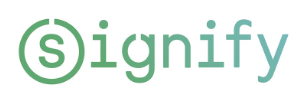Ultraviolet light proves a safe way to decontaminate used respirators
Healthcare workers can safely reuse respirators disinfected by UVC from both microbiological - and product-quality perspective.
In case of high demand for respiratory protective masks (respirators) in case of a pandemic, the need for reuse was shown challenging. In case of such emergency, it is essential that the health care processes can be continued without negative health implications of the workers; reuse of decontaminated respirators should be safe, also with respect to their filtering capacity and fit. The project did therefore focus on both disinfection and physical properties of the respirators. Apart from the possibility of safe reuse upon shortages, reuse would also allow for reduction of spread of disease, reduction in health care costs and strong reduction of waste, thereby adding to sustainability goals of society.
For developing a the UVC disinfection approach, a range of UVC energy levels were explored for irradicating the biological agents (bacterial spores that are highly resistant to disinfection and corona virus that less resistant) even when covered by the respirator mask layers. A relation between UVC energy level and reduction of viability / infectiousness of the biologicals was determined allowing for calculating the fate of the biologicals in the respirator matrix based on the transmission of UVC through the respirator matrix. In addition, the effect of the UVC energy was studied on the integrity of the respirators form a physical point of view. In general, a six-fold dose for the eradication of the biological agents did still allow for the required respirators filtering capacity and face fit. The learnings from this study can essentially also be translated to other disposables, leading to safe reuse and adding to more sustainable processes.
Deliverables
|
Deliverable no. |
Description |
Deliverable type |
|
1 |
Transmission test (spectroscopy) |
Report (part of presentation) |
|
2 |
Spore test |
Report (part of presentation) |
|
3 |
Filter test |
Report (part of presentation) |
|
4 |
Fit test |
Report (part of presentation) |
|
5 |
Milestone on feasibility of disinfection using UV-C and decision point for continuation with virus test |
Presentation |
|
6 |
SARS-COV2 test |
Report (part of presentation) |
|
7 |
Feasibility report |
Report (presentation; publication) |


